The UK Ministry of Defence has acknowledged the growing challenges facing submarines in an era of rapid technological change, following comments from Vice-Admiral Angus Topshee, commander of the Royal Canadian Navy, who warned of a likely future where oceans become “effectively transparent and submarines are no longer allowed to hide.”
In a written question to the House of Lords, Liberal Democrat peer Lord Lee of Trafford asked the government to assess Topshee’s remarks. Responding on 29 September, Defence Minister Lord Coaker said:
“We recognise that there are increasing threats to maritime security, including the underwater battlespace, from technological change and the proliferation of advanced capabilities. Assessments of these threats directly inform how we pursue technological advancements across all domains, including in the way we design, build and operate our submarines, to ensure the effectiveness of our capabilities in complex and challenging environments.”
In addition, the Defence Committee was recently told that short-term pressures on U.S. and UK submarine fleets could complicate the delivery of AUKUS commitments, particularly the planned Submarine Rotational Force-West in Australia.
Giving evidence on 9 September, Dr Sidharth Kaushal of the Royal United Services Institute outlined the geopolitical trade-offs facing the trilateral pact.
He told MPs that “in the relatively short term, there are real geopolitical trade-offs that the pact, and meeting its terms, entails. Getting past that short-term period of uncertainty will be absolutely critical.”
Dr Kaushal highlighted the limits of U.S. capacity to operate in two major theatres simultaneously. In the Indo-Pacific, he noted, the U.S. faces China as “an economic peer and arguably an industrial superior” for the first time, while also confronting a “trough in capability” as older attack submarines are retired faster than new Virginias can be built.
For the UK, he said, this coincides with the strengthening of Russia’s Northern Fleet, including the growing availability of Yasen-class submarines. That development, he argued, will drive demand for Astute-class submarines in the Atlantic at the same time as London is expected to commit an Astute to the Indo-Pacific rotation.
“There will be serious questions, particularly given issues around the readiness of the UK’s SSN fleet, about whether a rotational deployment in the Indo-Pacific is viable,” he told MPs. Failure to deliver, he warned, could undermine AUKUS domestically in Australia, while success would represent a major draw on UK assets in the North Atlantic.
Committee member Fred Thomas MP raised the broader question of U.S. expectations, recalling that during a recent visit to Washington the Committee was told by Pentagon officials that the priority was for Britain to “take care of Europe and the High North.”
Dr Kaushal indicated his agreement, underlining the strategic dilemma facing the UK as it balances commitments under AUKUS with its role in countering Russian naval activity closer to home.


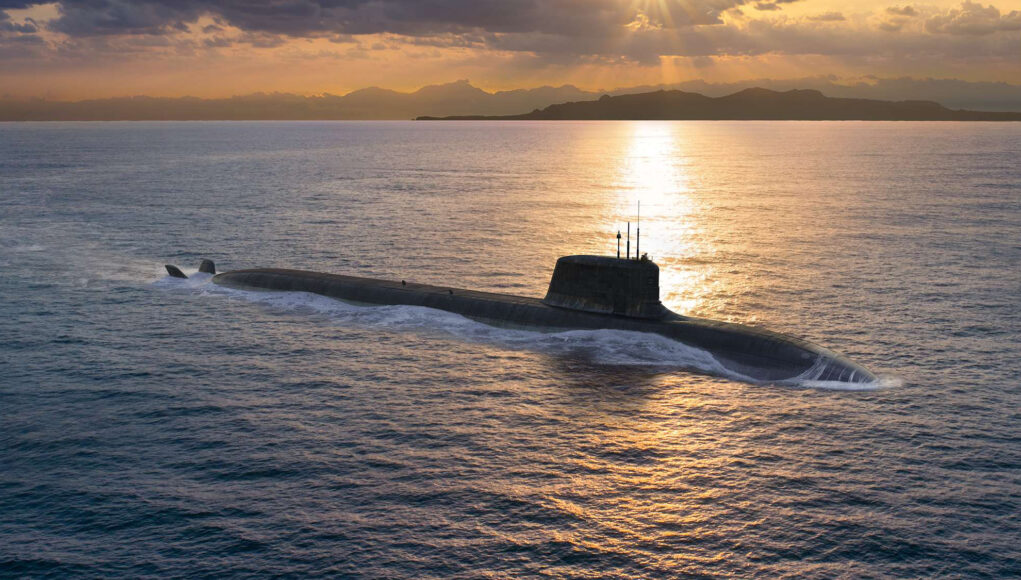

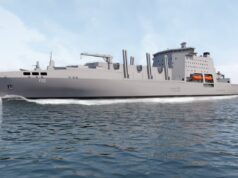

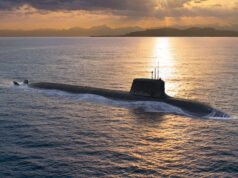
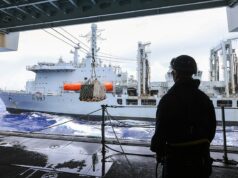
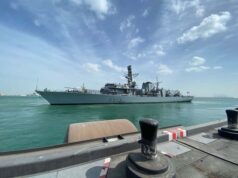
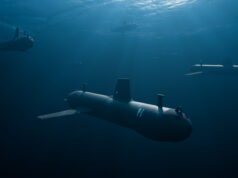
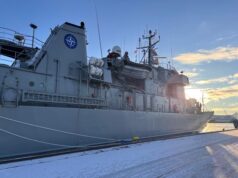

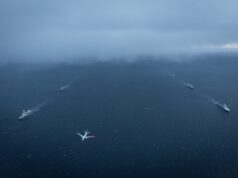

The Russians have been dealing with this threat for years by the use of Bastions. The UK could and would do the same probably in the area it already trains in around the western isles.
Agreed Jim,
However, current levels of fleet readiness just don’t allow the RN to be able to mount such a strategy effectively. The last pair of the Astute class SSN’s won’t be operational for sometime yet, added to maintenance woes and our submarine fleet is either seriously stretched or stuck alongside it seems. As for the ASW frigates, they are clearly knackered. The only good news is that the RN has 13 new frigates under construction or on order. They can not come fast enough, and 13 just isn’t enough…
We need a much, much bigger navy, especially if the USN can only fight on one front. To be honest it is something I have thought for sometime. With only 76 destroyers they would be hard pressed to cover the Pacific Ocean, let alone the Atlantic / Mediterranean at the same time. So any combined or coordinated action by the CRINK axis and POTUS would be faced with an impossible choice… East or West..?
Given Russia’s growing confidence and aggression in Europe and China’s stance on Taiwan and I could easily see the West faced with serious conflicts on two fronts, the only question is just how big they will be and will they be contained or could things run out of control..? Not comfortable thoughts by any means and very real possibilities.
Cheers CR
I think our fighting days are behind us. More worried about stupid things these days. Probably just surrender.
I think our fighting days are behind us. More worried about stupid things these days. Probably just surrender. What can we fight with anyway 100 tanks and 50 planes. Stealth fighters anyway and obsolete typhoons.
Although I do not disagree the fleet has dropped to dangerously low levels and government feet dragging and slow walking the Type 26 is a world class design. The Tranc 4 Typhoon with the new Brit developed radar is far from ovsolete.
We have good kit coming on line. We need more of it and faster .
RAF isn’t operating any tranche 4 Typhoons, no has it ordered any. Until recently we weren’t able to do maintenance on the Astutes due to the failure of a lift.
I didn’t say we were but it is my understanding the T3 will be updated to T4 standard. The typhoon is far from obsolete.
The neglect of our ship maintenance facilities does not detract from the fact the Astute is a very good SSN,
CH3 very good tank , just not enough of.
Kit donated to Ukraine but not replaced.
Yes unfortunately the US SSN fleet is proportional in just as a bad way as the UK fleet.. both sides suffered the same set of issues.. slow decision making on a replacement SSN, extended development and leading to a decay in production capability.. all matched in with old fleet retirement… then to add Salt to the wounds no investment on support infrastructure and dry docking.
This has lead to the once massive US SSN fleet of around 100SSNs being reduced to 43 by the end of the decade.. and of these 43 around 33-35% will likely be laid up without dive certificates. Giving the USN an operational fleet of around 30 boats.. with a recognised peacetime requirement for 66 boats with only 20-25% laid up in long term maintenance..
That is a big problem moving forward because China has finally after many decades suddenly moved its SSN programme forward massively.. min of 20 SSN/SSBN slips backed up by a whole set of large and small components assembly plants. Reactor fueling plant and even a completely separate tiling and painting shed.. all linked by an internal rail network.. essentially more nuclear submarines building capacity than all the western nuclear powers combined..and they are even building more slips it would seem.
The final problem is most observers now think China has cracked SSN building.. its last obstacle to a peer SSN was reactor energy density.. and Russia helpfully gave them a marine reactor with the density needed to power an SSN with a single reactor.. they already had the tiles, rafting, pump jet propulsion and CNC machining perfected.. the last big issue was the dual reactor factor.
The US Navy has problems but to compare them with the absolute joke that the RN has become… Is just silly.
Agreed.
No need to worry too much, most of our boats are safely tucked up in port.
A transparent ocean has terrifying implications for the integrity of a nuclear deterrence.
Yes but think of all the treasure wrecks we’ll find.
Oh goodie, shiny things!!
Don’t let the Treasury get their hands on it.
We must increase our strategic food colouring reserves to colour it back in again
A transparent ocean will have implications however it is still a big ocean. As for USN/RN SSN numbers and future commitments, the RN should never have gone down to less than 12 SSNs. The current numbers are ok for policing deterrant but for war time deployments, no. As for the Indo-Pacific we need to commit one of our SSNs to Aus as we need to get the RAN onside with the new SSN-As which for the RN could drive down costs and increase numbers. My future concern is to bring the RN SSN fleet up to 12 boats of the SSN-A type would take about 20 years that is with a 7 year build time 18 month stagger and once production gets into full swing up to 5 boats under diffrent stagies of construction at any given point. By the time the last boat leaves the yard the first boat is ready for decommissioning. So we will need to either A- reduce build time to four years or B- double the yard capacity to build more at the same time. I think the reduction of build time is the more realistic. We also need to remember HMS Astue is 15 years old now, we need to get a move on as she will be ready for decommissioning in 10-15 years.
This is nothing new with detection technologies – other than sonar – available to detect submerged man-made objects for decades.
.
.
This is where C4*ISTAR comes into it.
.
.
* pick a lucky number depends on the budget and country 4. 5. 6. Most of which you will not read about on a Wiki page 🙃
If they’re considering build T91s to complement the ship fleet they should extend the thinking of maybe a small 4-5 SSKN fleet so there few SSNRs can go further afield. Why isn’t this being brought up in the conversation? Lots of good SSKN’s out there and they can’t all be wrong? And this has been suggested before with these maybe they also need to consider a fourth naval base in the Rosyth/Edinburgh/Aberdeen area, North Sea facing forward a quicker reaction time to station? I’m no armchair admiral but some of this stuff is barking obvious…isn’t it?
Ship, Submersible, Conventionally powered, Nuclear powered?
Isn’t T93 the underwater equivalent of T91 as you suggest?
SSK’s are very expensive and of limited use for a blue water navy. Almost anything an SSK can do can now be done by a drone for 1% the cost.
Russia only has three submarines that can actually deploy into the Atlantic and the are clearly noisy as hell as we normally have media reports and time they approach the Norwegian Sea of their activities.
All three were circling the Ford class last month giving away their acoustic signature to NATO ASW forces who were probably delighted. Much the same as Chinas daft tactics against CSG 21 in the SCS when we clocked every one of their lates type 93 boats and they had no idea Astute was lying around for weeks in advance.
To be honest the Chinese know the T93 and T93A. is rubbish and detectable.. each is essentially a bit of a testbed for various bits of tec.. they were practicing their drills and watching the RN do theirs and I doubt cared much about giving away data on their T93As… it’s all backwards engineer tec purchased or stolen from Russia and the west in those boats.
To be honest letting these boats get the merry what’s kicked out of them would be part of their paradigms of hide your strength as these boats are not a strength.
Mmm. Long before technological advances make submarines easy targets, they will make all surface warships so vulnerable as to be undeployable..
Easy to find ships on Ship Tracker !
Exactly. And that’s just open source information. I guess all of the interest in unmanned missile carriers is driven by the realization that as currently armed, current warships might not last long.
We’re probably at the point where large ships are being tracked by the enemy 24/7 and vulnerable to missiles being fired from any location on the globe due to hypersonic glide vehicles, and most vulnerable when they are in port.
Probably the best easy read academic paper on this subject is from Australia for some bizarre reason “Transparent oceans? The coming SSBN counter-detection task may be insuperable” National Security College, The Australian National UniversityISBN: 9781925084160. It’s free to download as a PDF and a great its part of a set of three academic papers looking at the strategic value and impact of nuclear submarines in the pacific.. it’s touch out of date as it was written in 2020.
Their assessment was that the deep oceans were LIKELY or VERY LIKELY ( these are risk management terms and means it is 70% to 90% probability going to be released) to become transparent by 2050 and that the most important issue was that SSBNs would become trackable by 2050.
Interestingly what they also say is that if the ocean’s become transparent the west’s advantage in choke point control lessens as they become less relevant as you don’t need to control the choke point to track and kill the sub ( a Cold War example if the entire Atlantic was open to view buy the west, it would have not needed to focus on the GIUK gap because it could find the Russian SSN anywhere)
Secondly counter detection tec becomes less important as silencing no longer means harder to detect.
They essentially concluded that counter detection May by 2050 become impossible and other ways to protect strategic submarine forces will need to be used.. as the standard Atlantic or pacific SSBN patrol becomes a bit of death trap with a potential likely outcome of being detected ( the west’s enemies get a outcome of very likely so it’s even worse for china ).
So that means that potentially SSBNs will instead of hiding in the deep oceans need to be protected in bastions if they can be found they will needed to be massively protected or potentially hide in even harder to reach places and may need to spend their entire time under artic ice.
HI Jon, what technology are they saying will be used to make the oceans transparent?
Nothing new. The report suggests that with a widespread sensor mesh- satellites, aircraft, surface ships, UUVs, and tethered sensors- all linked, existing signs- noise, radiation, magnetic anomaly, turbulence – could all be processed into a more accurate mapping of submarine presence. It also argues that counter detection is unlikely to match the improvement in detection.
Of all Navies to criticize! Maybe if Canada could get more than one of its antique Brit diesel subs operational at any one time, Angus would have some creditability. Reminds me of the guy with an old AMC Gremlin telling his neighbor with a new Cadillac how worthless and bad Cadillacs are. Angus’ comments are likely mollifying Canadian politicians that’s don’t want to pay for new submarines to protect the Canadian Arctic. Instead, Canada could look at AUKUS as an opportunity to leverage once a proven design is in service; if they it keep it’s antiquated white elephants even slightly creditable until then.
Perhaps the politicians in Canada are still addicted to the US picking up its military missions for free, and the ‘mouthpiece’ commander of the RCN is now in just a political position too.
whine, whine, bitch, bitch…YAWN
The kind of sensor technology he is refering to is still at best decades away and even then it won’t turn the ocean into one massive illuminated glass tank. The information that will need to be sorted through just to look for a sub in a small area of ocean will be collosal. At best it will be like a ww2 anti aircraft search light.
It is the same with quantum radar which, in theory, will utterly negate stealth,
This is just the latest in a long list of development , counter development which has been at the centre of weapons development for centuries.
I tend to agree. Sword and shield, stroke and counter stroke the age old history of weapon development.
I have no doubt that the new technology will be impressive, but networks and computer wizardry can be countered or directly attacked, for example. While sensor ranges and capabilities will improve there are theoretical limits which means you will need numbers to cover the whole ocean and the Pacific Ocean covers about half of the world’s surface, for example. Submarines will still deploy counters to sensors as it will drive up the requirements for sensor density and hence costs, submarine weapons will be developed with longer ranges so ever greater areas will need to be seeded with sensors and networking infrastructure. Also, we can all take a leaf out of Russia’s operating manual and put stuff on the sea bed ready to take out fixed networking infrastructure and or be in deployment zones for mobile elements of any detection system long before the shoots starts. There is always the option of hitting shore side infrastructure as well.
So yeh, on the face of it is might be theoretically possible to make the oceans transparent but that doesn’t mean it will be easy to do or maintain. I am sure the West will be deploying the same kind of tech and strategies to counter Russian and Chinese subs, yet we are scrambling to build more SSN’s and SSBN’s and so are the Russian’s and Chinese..! While I am entirely confident in our MoD’s ability to seriously s***w things up on occasion I am also confident that they do get a lot right as well its just that we rarely speak about those successes. So in summary, life is going to get tougher for SSN / SSBN forces but not impossible and they will still be able to deliver considerable power and surprise. There is also the distinct possibility that this is assertion contains a degree of scientific hypobole as scientists, likely every other person on the planet, try to ensure their own point of view, e.g. the technology may not arrive until much later, if ever, as they are looking into the future and I bet they don’t have a working crystal ball!
The paper does, however, serve as a useful warning of what might come along and should be taken seriously and probably is.
Cheers CR
The main threat is not really around curtailing SSN operations as they are essentially always going to operate as tactical assets (with strategic mobility and an ability to undertake strategic strike) so hold a risk of detection and destruction as part of their tactical role so adding increased detection in regards to the strategic element of their operations is an acceptable risk because even if you can detect an SSN mid ocean actually getting to it and having the capabilities in place to develop and prosecute the kill chain will be challenging.. after all if we take say a sino US conflict. The U.S. detect 3-4 T93Bs SSNs mid pacific or mid Indian Ocean.. they have to deal with that fact and send the resources to prosecute.. they are not going to send a 1 on 1 SSN response or a single ship..they will send a task group after each detected SSN.. that’s three task groups out of the battle for the first island china.. chasing down 20-30 knot SSNs in the middle of the ocean… essentially china gets what it wants..SSNs move from a knife in the dark to a Damocles sword hanging above your head…. You still have to react and spend precious resources to counter both those.
The big issue is around SSBNs because the entire concept of the CASD is that it is functionally undetectable. Once you attach a risk of likely to the detectability of CASD in a mid occean development then the concept of CASD as it is at present is pretty much done. This is the very very big problem that needs addressing.. its a shift in the nuclear balance.. for a long time we have lived with the concept of the nuclear powers all having an essentially undetectable and therefore completely secure second strike capability.. what happens when the nuclear powers no longer have the luxury of a completely secure second strike capability and what do they need to do to ensure a secure second strike ability is maintained?
I too thought that if detection does become much more capable, the challenge to the relatively small number of SSBNs will be more critical than the effect on SSN/SSK operations.
If second strike capability is no longer certain, then nuclear powers might have to revert to a fire on warning posture, for which land based missiles would be sufficient.
Future ASW doctrine will include some form of unmanned surface and subsurface vehicles, in combination with current systems, enhanced by the development of air launched torpedoes.
These naval unmanned systems could in theory operate for months and the number required for sufficient coverage of the South China Sea is economically quite viable.
Blue yes but Not any good at providing kill chain for the entire pacific or India ocean..even you can detect the SSN 5000km away mid ocean you still have to send a number of somethings to fix track and launch the kinetic effector and that means you will need other SSNs or a task group to chase it down, these very long distance loitering ASW platforms will by nature be slow as you like and not the platform you would choose to Chase down an SSN. They will be part of the sensor network that helps locate the SSN.
Point taken regarding the loitering drones, but I can see the attack role being carried out by the development of a naval version of the FPV, launched from either a manned or unmanned surface or airborne vehicle. An airborne launch vehicle seems more likely, as it’s faster and cheaper than a SSN or task force.
Indeed but there are a couple of things to consider
1) detection is not kill chain, to get a kill chain takes a lot and involves the sequential process of identifying a target, fixing its location, tracking it, targeting it, engaging it with weapons, and assessing the results to achieve mission success. To do that to an SSN even if you known it’s in x square miles you need to dump a lot of extra sensors on it for the kill chain to work.
2) tyranny of distance.. most fast airborne capabilities have a range of maybe at best 2000km and they travel at 600-800km per hour. So you detect a SSN in the mid pacific 4000km from your base.. what do you send ? Even if you can organise a tanker to get your air asset to the place you detected the SSN it’s traveling at 40-50Kmp it takes you 6-8 hours to get to it its traveled 300-400 km in any direction.. so you need a lot of resources to start dumping sensors to find it..and one large airborne ASW asset 4000km from home does not have the time on station or the sensors to get a kill chain..
3) even with a kill chain actually killing an evading SSN would be hard.. they are fast, strong Weil put together ships that can go deep. Depth charges are functionally useless, lightweight torpedoes need to get lucky. Just as an example an SSN can dive to 600meters a lightweight torpedo like a Mk46 has a max depth of around 450 meters.. basically if a SSN is determined to run from an air asset it will likely run from it..
4) if your air asset is hanging around unprotected mid ocean the enemy can send its own air asset to kill your air asset before it gets close to the SSN.
So you many know due to a transparent ocean that SSN x is located 4000km mid pacific..waiting to close into 2000km from your coast to attack.. but getting the resources to prosecute the kill chain will be hard and will involve your own SSNs and surface ships chasing it down..
To be fair, what is the status of the Canadian submarine fleet? When did it last put a boat to sea? There maybe some self interested politics involved in this.
That said the UK desperately needs to get on with building the next generation of SSNs as quickly as possible as both China and Russia are likely to and Astute is not that far off needing replacement.
Don’t assume there will be satellites in 2050, particularly in low or polar orbits.